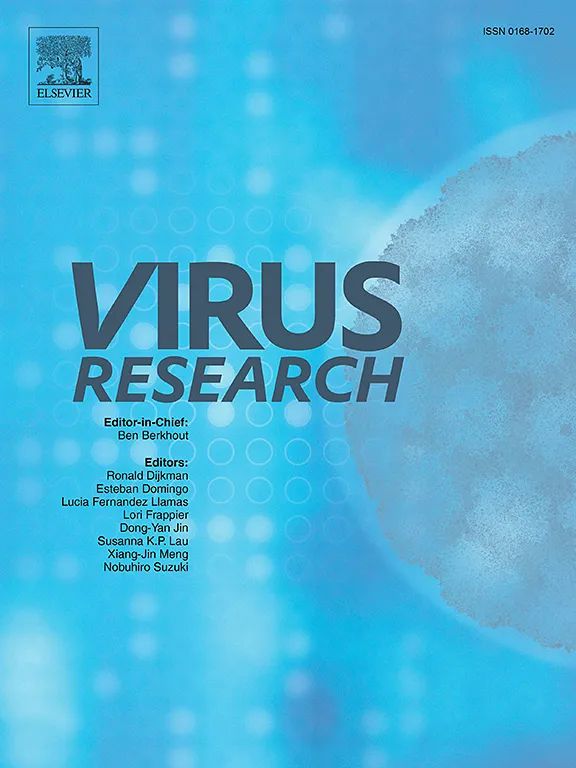Modulation of CCR5 expression and R5 HIV-1 infection in primary macrophages exposed to sera from HESN, LTNP, and chronically HIV-1 infected people with or without natural antibodies to CCR5
IF 2.5
4区 医学
Q3 VIROLOGY
引用次数: 0
Abstract
CCR5 is the main co-receptor for HIV-1 cell entry and it plays key roles in HIV-1 mucosal transmission. Natural anti-CCR5 antibodies were found in HIV-1-exposed seronegative and long-term non-progressor subjects, suggesting a role in controlling viral replication in vivo. We assessed the effect of sera containing or not natural anti-CCR5 antibodies, on membrane CCR5 level and HIV-1 infection in primary macrophages. Sera modulated CCR5 expression with a trend dependent on the donor/serum tested but independent on the presence or absence of anti-CCR5 antibodies. All sera strongly reduced HIV-1 DNA in all donor's macrophages and no correlation was observed between CCR5 and viral DNA levels. These results suggest that CCR5 expression level is not a major determinant of macrophage infection and that the observed modulation of CCR5 and HIV-1 DNA might depend on factors other than CCR5-reactive antibodies present in sera and/or intrinsic to the donors on which sera were tested.

原代巨噬细胞暴露于HESN, LTNP和慢性HIV-1感染者血清中CCR5表达和R5 HIV-1感染的调节,这些患者有或没有CCR5的天然抗体
CCR5是HIV-1细胞进入的主要共受体,在HIV-1粘膜传播中起关键作用。在hiv -1暴露的血清阴性和长期无进展的受试者中发现了天然抗ccr5抗体,提示其在体内控制病毒复制中起作用。我们评估了血清中含有或不含天然抗CCR5抗体对原代巨噬细胞中膜CCR5水平和HIV-1感染的影响。血清调节CCR5表达的趋势依赖于供体/血清测试,但独立于抗CCR5抗体的存在或不存在。在所有供体巨噬细胞中,所有血清都能显著降低HIV-1 DNA, CCR5和病毒DNA水平之间没有相关性。这些结果表明,CCR5表达水平不是巨噬细胞感染的主要决定因素,CCR5和HIV-1 DNA的调节可能取决于血清中存在的CCR5反应性抗体和/或供者血清中固有的其他因素。
本文章由计算机程序翻译,如有差异,请以英文原文为准。
求助全文
约1分钟内获得全文
求助全文
来源期刊

Virus research
医学-病毒学
CiteScore
9.50
自引率
2.00%
发文量
239
审稿时长
43 days
期刊介绍:
Virus Research provides a means of fast publication for original papers on fundamental research in virology. Contributions on new developments concerning virus structure, replication, pathogenesis and evolution are encouraged. These include reports describing virus morphology, the function and antigenic analysis of virus structural components, virus genome structure and expression, analysis on virus replication processes, virus evolution in connection with antiviral interventions, effects of viruses on their host cells, particularly on the immune system, and the pathogenesis of virus infections, including oncogene activation and transduction.
 求助内容:
求助内容: 应助结果提醒方式:
应助结果提醒方式:


